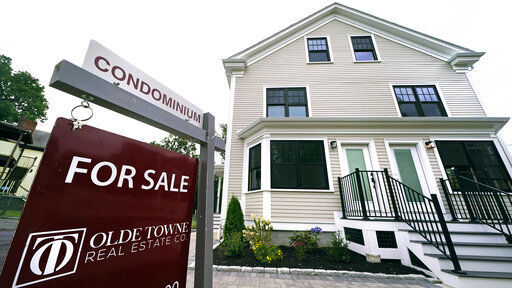LOS ANGELES — Rising interest rates are making adjustable-rate mortgages an increasingly attractive alternative to common 30-year, fixed-rate home loans.
ARMs made up 13% of all home loans by dollar volume in March, their highest share since January 2020, according to CoreLogic.
The increase coincides with a sharp rise in mortgage rates. The average weekly rate on a 30-year mortgage ticked up to 5.3% last week, the highest since 2009, according to mortgage buyer Freddie Mac. The average rate was 2.94% a year ago.
Rising mortgage rates, in conjunction with sharply higher home prices, make homeownership less affordable.
“It’s natural for homebuyers to be looking at ways to reduce that mortgage payment, and one of the ways is to use an adjustable-rate mortgage,” said Selma Hepp, deputy chief economist at CoreLogic.
Adjustable-rate mortgages don’t make it any easier to qualify for financing, but they do offer buyers some flexibility with their monthly mortgage payments in the first few years of the loan term.
For example, a homebuyer who takes out a typical 5/1 ARM will have a low, fixed rate for the first five years of the loan. After that, the loan adjusts to an adjustable interest rate, which could be higher or lower, until the debt is paid off, or the buyer refinances the loan.
Such loans became less attractive the last couple of years as average long-term mortgage rates fell to an all-time low.
ARMs’ share of all loans by dollar value sank to just 4% in January 2021 from 13% a year earlier, according to CoreLogic. ARMs have made up between 10% and 19% of all loans by dollar value over the last 12 years.
At the height of the last housing boom in 2005 ARMs represented just under 45%, CoreLogic said.
Back then, such home loans were more common because lenders could sign up homebuyers for a loan and then take it off their balance sheet by selling it to investment banks that made a big business of selling mortgage-backed securities to investors. Far looser lending criteria also set up many loans to default when they adjusted to a higher rate.
Such a scenario isn’t in the cards now, however, as banks have beefed up their lending standards since the Great Recession.
“We still see very solid underwriting standards,” Hepp said. “The last few years have been some of the best underwritten loans, irrespective of what people use as their mortgage type.”


